Pass the biscuits.
Buttery soft texture, flaky layers and made completely from scratch, these homemade Butter Biscuits deserve a spot at your dinner table. Made with only 6 simple ingredients you probably already have at home!
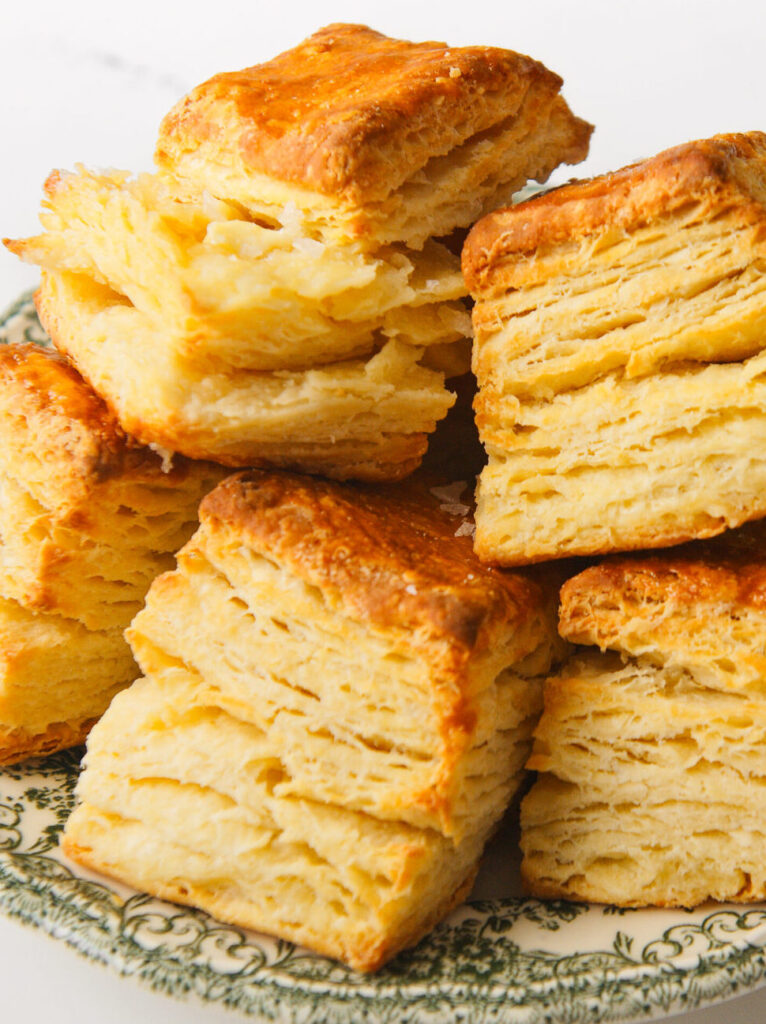
Why you'll love my recipe.
Flaky layers
These extra soft and fluffy biscuits have so many irresistible layers. You’ll have trouble resisting the urge for another one!
Healthier ingredients
You control the quality of ingredients like flour and butter. No added preservatives and all the flavor.
Ingredient list.
Butter
Butter is what creates those flaky layers and gives this recipe all that delicious flavor. Use high-quality butter!
Bread flour
The high gluten in bread flour makes the biscuits so tender and soft.
Sugar
Sugar helps caramelize the color of the biscuits and adds slight flavor.
Salt
Salt balances out everything.
Baking Powder
It helps the biscuits rise.
Milk
Adds moisture and creates a tender crumb.
For the rest of the ingredients, please see the recipe index card below!

What makes a biscuit so flaky?
What makes a good biscuit so irresistibly flaky is lamination. Lamination is a pastry making technique used to create layers of butter in the dough, resulting in those iconic, flaky textures we enjoy in pastries like croissants.
How to laminate biscuit dough.
Step 1
Pour the shaggy dough onto a clean, floured work surface. Press together and shape the dough into a rectangle, about 3/4 inch thick.
Step 2
Shape into a rectangle, about 9 inches long. Cut in one press into thirds. Stack and press. Rotate and use a rolling pin to reinforce the shape into a larger rectangle again.
Step 3
Repeat the layering and rotating steps 4 times total.

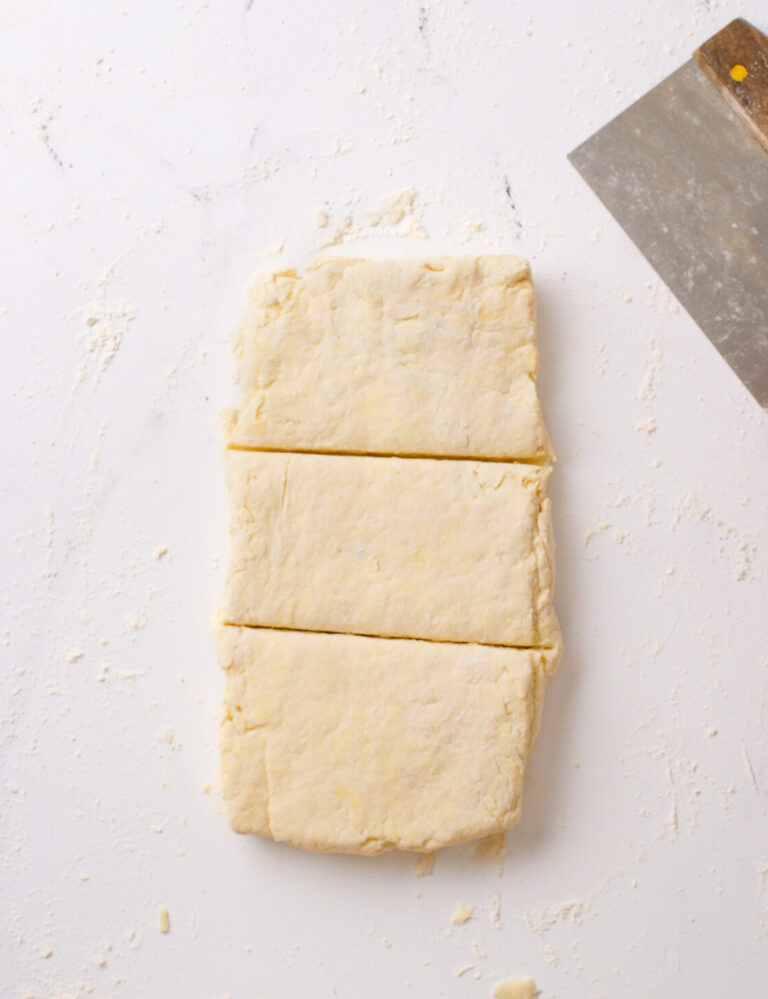


How to make Butter Biscuits.
The section below is a quick overview of how to make this recipe. For full details, see recipe index card below!
Combine the dry ingredients
Use a large bowl to whisk together the dry ingredients.
Grate and freeze the butter
Frozen, cold butter is what helps create those layers of lamination and yield the most fluffy biscuits.
Stir in the milk
Use your fingers to coat the butter with flour. Then, make a well in the center of the bowl and add the cold milk. Use a fork to roughly and slowly mix until the milk is absorbed. You may still see small areas or pockets of flour and that’s okay.
Shape and layer the dough
See above for how to laminate the dough.
Bake
Bake at 400°F for 30-35 minutes until golden brown. This is where the magic happens. Watch your hard work of laminating come to life in those flaky layers.


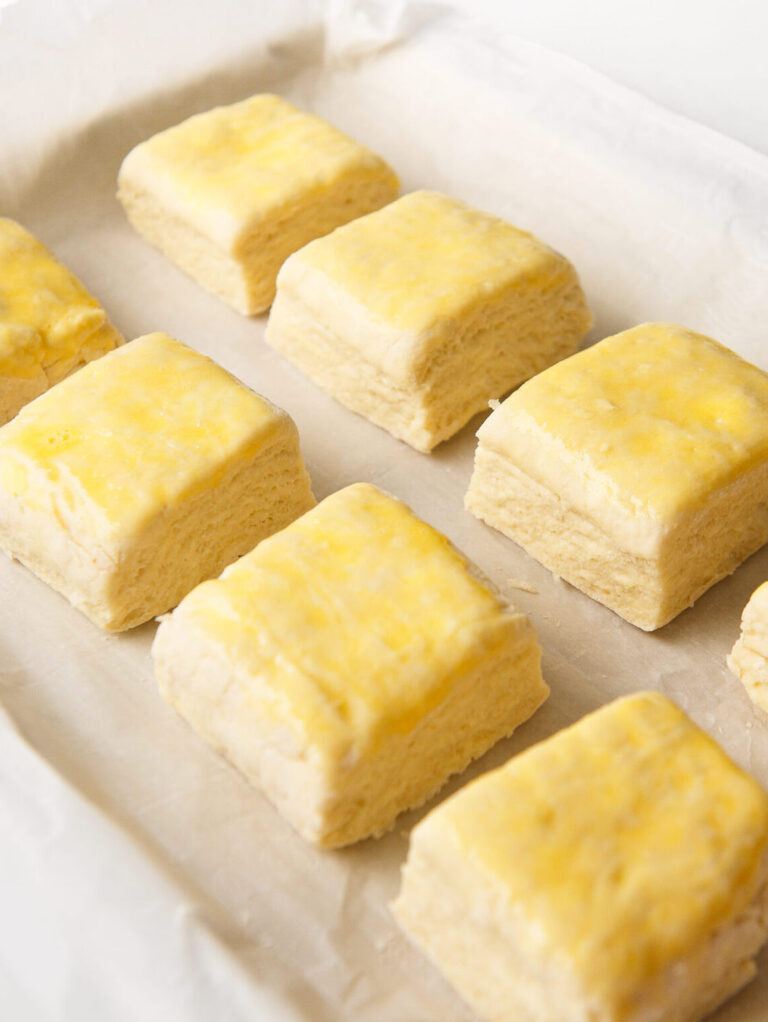

Why are my biscuits not rising?
Below are a few of the most common reasons why your homemade butter biscuits may not be rising to their fullest potential:
Expired leavening agents
Baking powder loses its effectiveness over time. Replace them every 6 months.
Oven temperature too low
Biscuits need a hot oven for a proper rise. Make sure to preheat the oven ahead of time.
Too much flour
Too much flour makes these biscuits dense and throws off the ratio of baking powder to liquid, which reduces its ability to rise.
Overworking the dough
This is not your typical bread dough. Handle as little as possible to keep the butter cold, which helps create those tall flaky layers. If the dough starts to get very sticky, place it in the freezer for 15 minutes and try again.
Expert tips from my test kitchen.
Freeze before baking
This helps solidify the butter layers after all the shaping and folding. All you need is 15 minutes in the freezer while the oven preheats.
Laminate well
What makes the perfect biscuit is the flaky, buttery layers that come from lamination. It’s a process that involves folding and rolling dough with layers of butter.
Cold butter and cold milk
When cold butter is worked into the flour, it remains solid rather than melting. During baking, the butter melts and releases steam. This steam creates air pockets, resulting in all those flakes! Cold milk helps keep the dough cool.
Measure flour properly
Measure flour by weight in grams instead of cups. Shop my exact scale here. (affiliate link) If you don’t have a scale, fluff the flour with a fork in its bag or container, then spoon it into the measuring cup before leveling off with a flat edge. Do not scoop directly into the flour bag. This will add way too much flour to the dough, making it dry!
Why is my biscuit dough sticky?
If you measured ingredients using a scale, the dough shouldn’t be sticky. Sticky dough is a result of too much liquid or not enough flour. Add a little bit of flour at a time until it is no longer sticky but keep in mind, this addition and change to my original recipe may change the final result. To prevent this, use scale to measure your ingredients.
Can I use buttermilk instead of milk?
Yes! You can substitute milk for buttermilk in a 1:1 ratio.
Can I prepare biscuits ahead of time?
You can prepare the dough, shape and store in the refrigerator up to 24 hours before baking. You can also freeze unbaked biscuits for 3 to 6 months. Proceed with the recipe baking directions. Once baked, they keep well for up to 3 days in an airtight container. Reheat in the oven at 300°F for 5-10 minutes.
Can I add other ingredients to my biscuits?
There are many variations and substitutions when it comes to a basic recipe like biscuits. Here are a few of my favorite add-ins to add when first mixing the dough:
- Cooked bacon and cheddar
- Cheddar and chive
- Garlic and herb
- Cheddar and jalapeño
- Cinnamon
How to store leftover Butter Biscuits.
Once completely cooled, store leftover butter biscuits at room temperature for 1-2 days in an airtight container or resealable bag. Add a paper towel inside to absorb moisture and prevent sogginess.

Your feedback is valuable to us. If you have any questions, please let me know in the comments. If you try my recipes and love them, please take a moment to leave a five star review. Thank you for being part of the Bake Cook Repeat community! Don’t forget to follow us on Facebook, Instagram, Pinterest and Subscribe on YouTube.

Butter Biscuits
Patricia Martinescu from Bake Cook RepeatIngredients
- 3½ cups bread flour, fluffed, spooned and leveled
- 1¼ cup whole milk cold
- 12 Tablespoons unsalted butter grated and chilled
- 1 Tablespoon baking powder
- 1 Tablespoon granulated white sugar
- 1/2 teaspoon sea salt
Instructions
Prep the ingredients.
- Combine flour, sugar, baking powder and salt in a large mixing bowl and whisk together.Note: For best accuracy, measure flour by weight in grams instead of cups. Shop my exact scale here. (affiliate link) Toggle back from US Customary to Metric conversion in my ingredients section above to find the weight in grams. If you don't have a scale, fluff the flour with a fork in its bag or container, then spoon it into the measuring cup before leveling off with a flat edge. Do not scoop directly into the flour bag. This will add way too much flour to the dough, making it dry!3½ cups bread flour, fluffed, spooned and leveled, 1 Tablespoon baking powder, 1/2 teaspoon sea salt, 1 Tablespoon granulated white sugar
- Grate the butter into a plate and place into the freezer for 20 minutes. THIS IS IMPORTANT! Do not skip it. Then, add the cold, grated butter to the dry ingredients bowl and mix lightly to coat.
Mix the dough.
- Use your fingers to coat the butter with flour. Then, make a well in the center, add cold milk. Let it sit and slowly incorporate the flour and milk until the dough comes together and the liquid is absorbed. The dough will be shaggy and fall apart. That is normal and exactly what you want.Note: For best accuracy, measure liquids by weight in milliliters instead of cups. Shop my exact scale here. (affiliate link) Toggle back from US Customary to Metric conversion in my ingredients section above to find the weight in milliliters. If you don't have a scale, measure at eye level.1¼ cup whole milk
- Pour the dough and any dough crumbles onto a clean, well-floured surface. If the dough becomes sticky in some areas, add a bit of flour over the surfaces until it is manageable. Use your hands to gently bring the dough together into a cohesive rectangle.
Laminate the dough.
- Pre-heat the oven 400°F. Line a baking sheet with parchment paper and set aside.
- Shape into a rectangle, about 9 inches long. Cut into thirds. Stack and press. Rotate and use a rolling pin to reinforce the shape into a larger rectangle again. Repeat the layering and rotating steps 4 times total.
- After you've repeated the lamination layering at least 4 times, use a rolling pin to smooth out into a large rectangle., about 9 inches long.
- Cut the dough into 8 large square biscuits. Place the biscuits onto the un-greased baking sheet. While the oven is preheating, freeze the baking sheet with the biscuits for at least 15 minutes. Then, brush only the tops with egg wash. Bake for 30-33 minutes until the edges and the tops are golden. Note: Make sure the egg wash doesn't fall over the sides. The eggs will seal the layers and limit the height of your lamination during baking.
Notes
- You can prepare the dough, shape and store in the refrigerator up to 24 hours before baking. You can also freeze unbaked biscuits for 3 to 6 months. Proceed with the recipe baking directions. Once baked, they keep well for up to 3 days in an airtight container. Reheat in the oven at 300°F for 5-10 minutes.
Nutrition
The provided nutritional value above is an estimate per serving. 100% accuracy is not guarenteed. Please see Nutrition Information Disclaimer in our Privacy Policy.
Nutrition Information Disclaimer


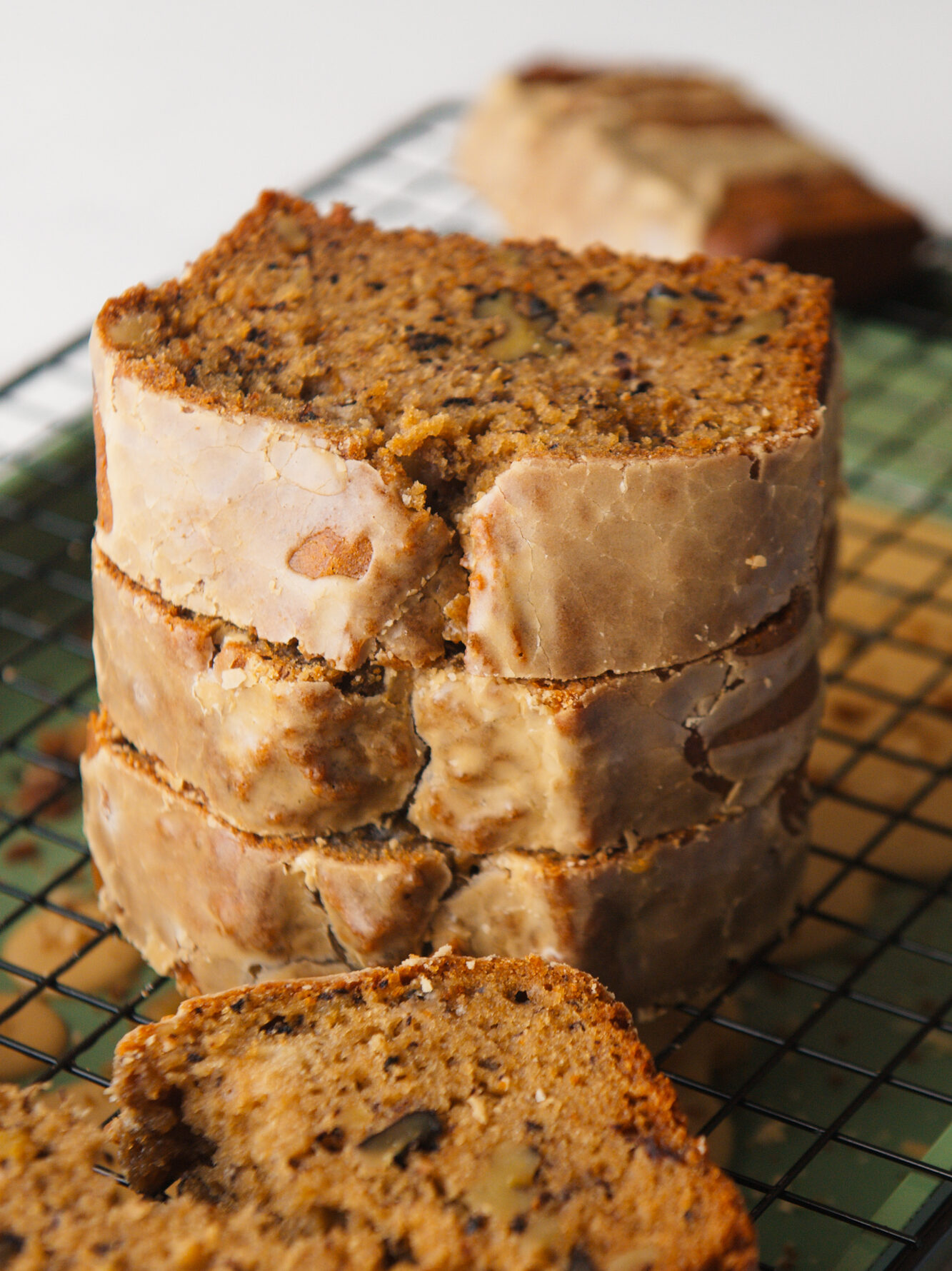
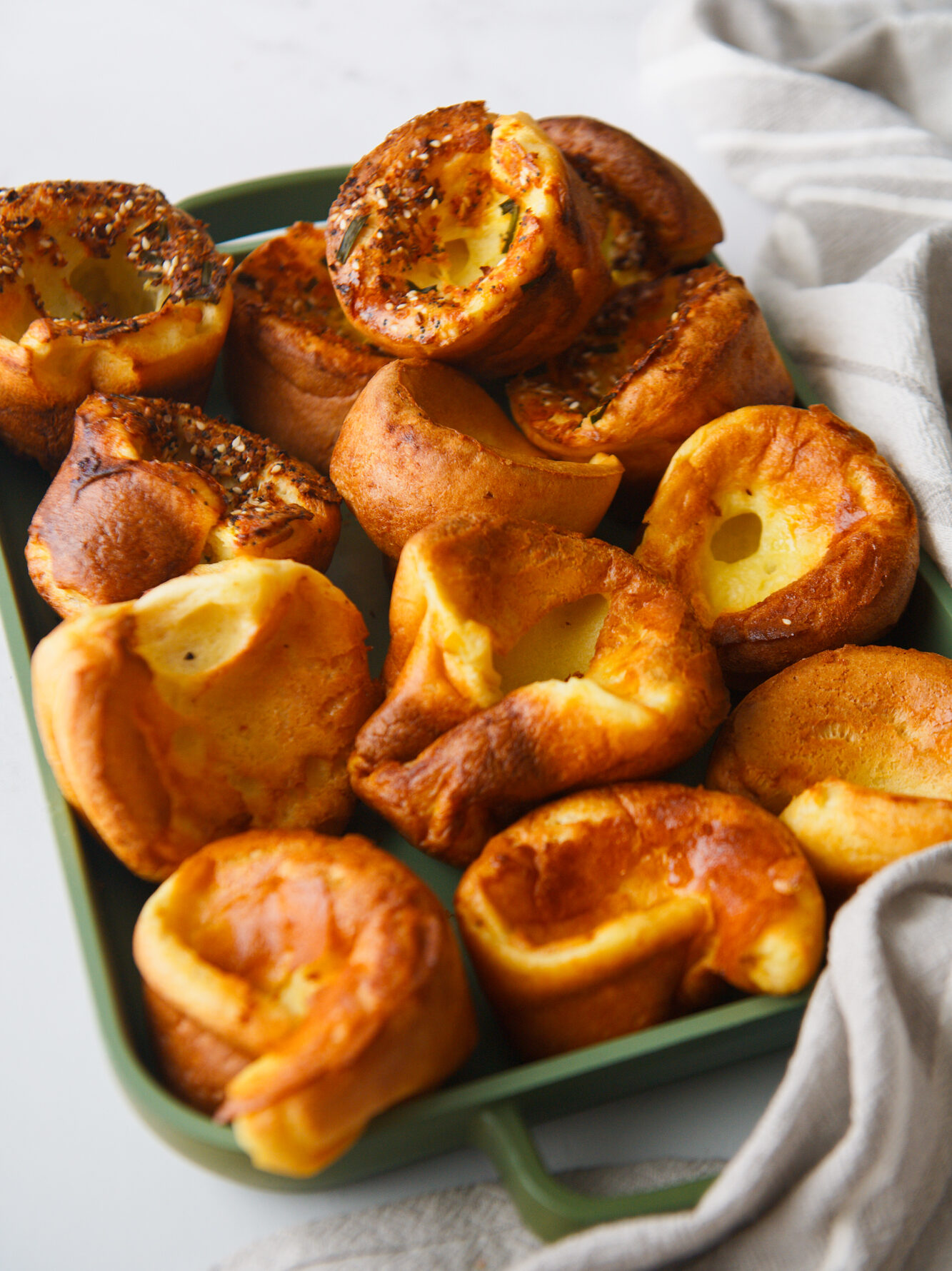

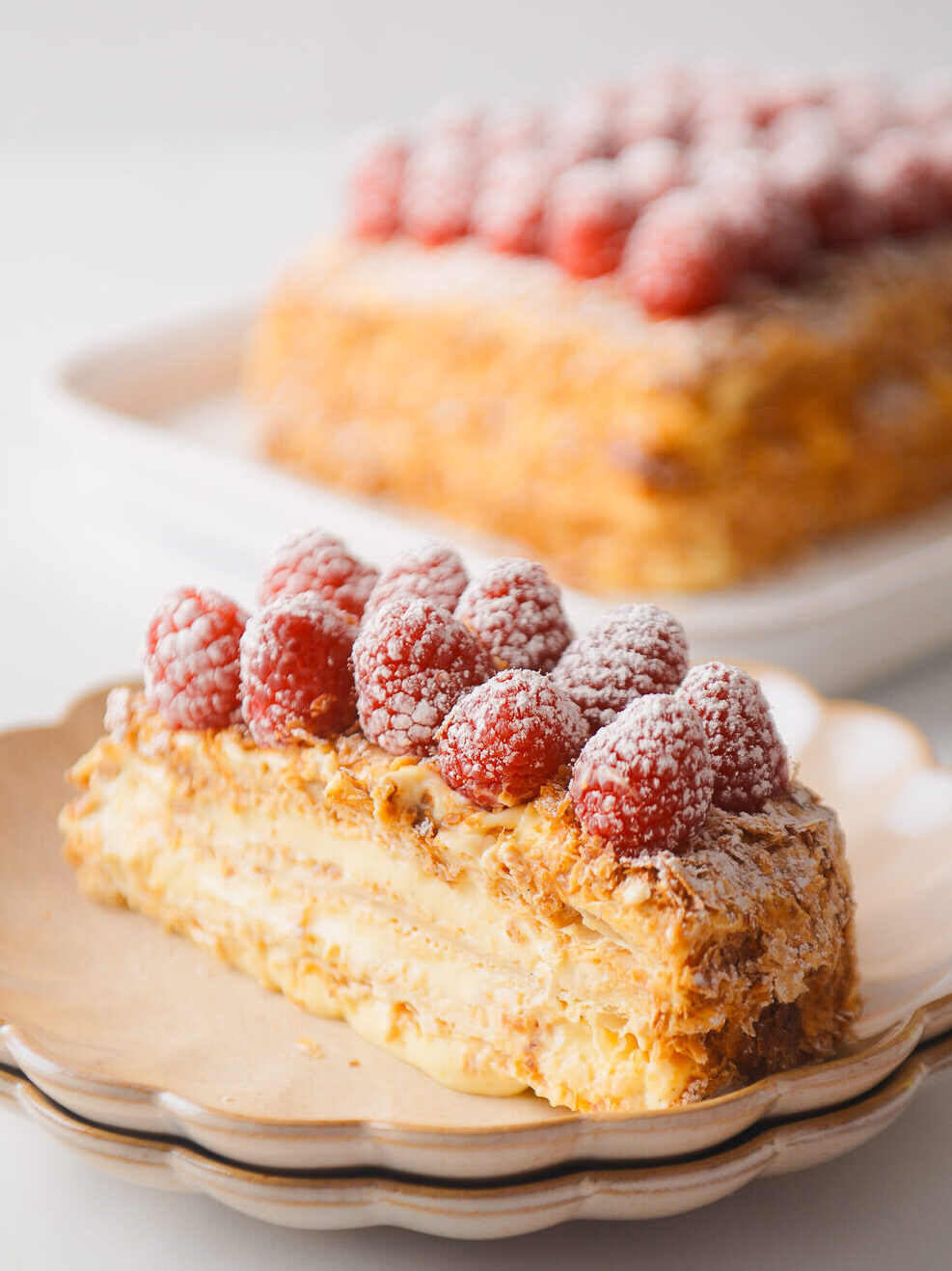

I made this recipe more times than I can count. Flaky layers every time.
Thank you, Lora! We’re happy to hear this. 🙂